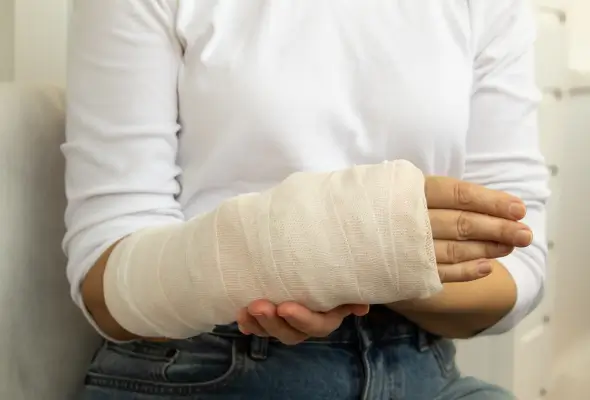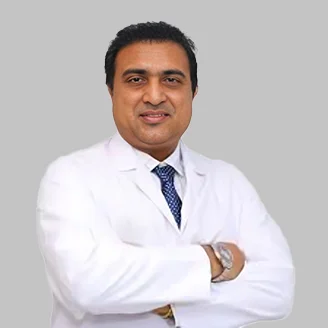-
Doctors
-
Specialities & Treatments
Centre of Excellence
Specialties
Treatments and Procedures
Hospitals & Directions HyderabadCARE Hospitals, Banjara Hills CARE Outpatient Centre, Banjara Hills CARE Hospitals, HITEC City CARE Hospitals, Nampally Gurunanak CARE Hospitals, Musheerabad CARE Hospitals Outpatient Centre, HITEC City CARE Hospitals, Malakpet
HyderabadCARE Hospitals, Banjara Hills CARE Outpatient Centre, Banjara Hills CARE Hospitals, HITEC City CARE Hospitals, Nampally Gurunanak CARE Hospitals, Musheerabad CARE Hospitals Outpatient Centre, HITEC City CARE Hospitals, Malakpet Raipur
Raipur
 Bhubaneswar
Bhubaneswar Visakhapatnam
Visakhapatnam
 Nagpur
Nagpur
 Indore
Indore
 Chh. Sambhajinagar
Chh. SambhajinagarClinics & Medical Centers
Book an AppointmentContact Us
Online Lab Reports
Book an Appointment
Consult Super-Specialist Doctors at CARE Hospitals

Broken Arm
Symptom, Causes, Diagnosis and Treatment
Broken Arm
A broken or fractured arm is a common injury that affects people of all ages. It occurs when one or more bones in the arm experience a break or crack, causing pain, swelling, and limited mobility. It is the most common fall injury that can occur to anyone, including children and older adults.Let's explore the diagnosis process, broken arm treatment options, and potential complications.

Types of Broken Arms
A broken arm can occur in various ways, affecting one or more of the three arm bones: the ulna, radius, and humerus.
Common types include:
- Closed Fracture: The skin remains intact, with no external wound.
- Open (Compound) Fracture: The broken bone is visible outside the skin, requiring immediate treatment to prevent infection.
- Displaced Fracture: The bone fragments are misaligned, potentially needing surgery for proper alignment.
- Comminuted Fracture: The bone breaks into multiple pieces, often requiring surgical intervention.
- Greenstick Fracture: Common in children, the bone cracks but doesn't break completely, resembling a bent green stick.
- Torus (Buckle) Fracture: One side of the bone compresses, causing the other side to bend. This type is also more frequent in children due to their softer, more flexible bones.
Symptoms of a Broken Arm
A broken arm often causes severe pain that worsens with movement. Individuals may hear a snap or crack at the time of injury. Swelling and bruising typically appear immediately after the arm bone is broken, and the affected area may feel warm. Many people instinctively hold their arms still to avoid excruciating discomfort.
Visible signs of a fractured arm can include an unusual bend or deformity. Some people experience nausea, dizziness, or pale, clammy skin due to shock. Less apparent symptoms might involve aching pain, redness, and slight swelling, particularly in hairline fractures. Grinding or grating sensations may occur when moving the fractured arm.
Another indicator is that pain is located directly on the bone, mainly when applying pressure. Numbness or tingling sensations can result from the broken bone putting pressure on surrounding nerves.
Broken Arm Causes
A broken arm typically results from trauma.
- The most common reason is falling onto an outstretched hand or elbow.
- Sports injuries also lead to arm fractures, especially in contact sports.
- Significant trauma, such as car or bike accidents, can break any arm bone.
- In younger individuals, falls from heights are frequent culprits.
- For older people with weaker bones, even a trip and fall from a standing height can cause a fractured arm.
- Unfortunately, child abuse can also lead to broken arms in children.
Diagnosis
Doctors diagnose a broken arm through a physical examination and imaging tests.
- X-rays are the primary diagnostic tool, confirming fractures and revealing the extent of bone damage. Magnetic Resonance Imaging (MRI) provides a comprehensive view of the fractured area, including surrounding tissues like cartilage and ligaments.
- Computed Tomography (CT) scans offer more detailed images than X-rays, aiding treatment planning.
- A bone scan might be used for fractures not visible on X-rays, although this requires two visits spaced four hours apart.
- Doctors may also conduct blood investigations to check for underlying conditions affecting bone health or healing.
Treatment for a Broken Arm
The treatment for a broken arm depends on the fracture type and severity of the condition. Here's a common fractured arm treatment guideline:
- Doctors typically start with non-surgical options. These include setting the bone, which may require muscle relaxants or sedatives to manage pain.
- Immobilisation is crucial for healing, often achieved through splints, slings, braces, or casts. Doctors usually wait for swelling to subside before applying a cast, which can take five to seven days.
- Pain management involves over-the-counter or prescription medications, although long-term use of nonsteroidal anti-inflammatory drugs may hinder bone healing.
- Rehabilitation begins soon after initial treatment to minimise stiffness.
- In more severe cases, surgery might be necessary to stabilise the fractured arm using fixation devices like wires, plates, nails, or screws.
Complications
A broken arm can lead to various complications. Risk factors for complications include old age, diabetes, smoking, low vitamin D levels, and certain medication. A broken arm may cause following complications:
- Depressive symptoms (changes in appetite & sleep patterns) are common after a fracture.
- Osteoarthritis can cause chronic pain and joint degeneration, especially in lower limb fractures.
- Some bones may not heal properly, even with appropriate treatment.
Serious complications include:
- Blood vessel and nerve damage
- Infections
- Compartment syndrome, caused by excessive swelling, can result in loss of sensation and function, requiring emergency surgical intervention.
- Open fractures expose bare bones to the environment, increasing the risk of infection.
Risk Factors
Risk factors include being a child or teenager, participating in contact sports, and being over 65 years old. People with conditions affecting bone density, like osteoporosis, face a higher risk of arm fractures, particularly from falls.
When to see a doctor
Individuals should consult an orthopaedic doctor immediately if they suspect a broken arm. This is crucial when experiencing intense pain, inability to move the arm, or noticeable deformity. If the bone is visible through the skin, swelling occurs, or new bruising appears alongside other symptoms, a visit to the emergency room is necessary. Even if the pain is less severe but hinders normal arm use, it's essential to consult a doctor promptly.
Prevention
While it's impossible to prevent all accidents, individuals can take measures to alleviate the risk of a broken arm.
- Maintaining good bone health through a calcium-rich diet and regular weight-bearing exercises strengthens bones and decreases fracture risk.
- Vitamin D intake through sunlight exposure or supplements aids calcium absorption.
- Creating a safe environment at home & workplace by removing tripping hazards and using proper tools for reaching high places can prevent falls.
- Wearing appropriate protective gear during sports & activities is crucial.
- For older adults, using mobility aids like canes or walkers when necessary can prevent falls.
- Regular bone density tests for those over 65 or with a family history of osteoporosis can help identify and address potential issues early.
Conclusion
While accidents can't always be avoided, taking steps to maintain bone health and create safer environments can reduce the risk of arm fractures. By staying informed about the causes, symptoms, and treatment options for broken arms, individuals can be better prepared to handle this injury if it occurs. Remember, prompt medical care and following through with prescribed treatment and rehabilitation are key to a full recovery.
FAQ's
1. How long does it take to recover after a broken arm?
Recovery time for a broken arm varies and depends on factors such as the type of fracture and its location. Generally, it takes about six weeks for the bone to heal. However, full recovery, including regaining strength and flexibility, can take up to two years. Most people require several months of physical therapy to restore muscle strength and joint motion.
2. What are the different fracture forearm treatment options?
Broken forearm treatment typically depends on the forearm fracture types and severity of the condition. Treatment generally includes immobilisation with a cast or splint, closed reduction, surgery with plates or screws for severe fractures, and physical therapy to restore strength and flexibility post-recovery.
3. How long does it take a broken arm to heal?
A broken arm typically takes 12 weeks to heal fully. The healing process depends on various factors, including the severity of the injury, age, nutrition, and overall health. Conditions like diabetes and habits such as smoking or alcohol use can affect healing time.
4. Can a broken arm heal naturally?
While bones have natural healing abilities, proper medical treatment is crucial for a broken arm to heal correctly. The bone may not heal appropriately without adequate alignment and immobilisation, leading to complications.
5. What happens if you ignore a broken arm?
Untreated fractures may result in infection, long-term nerve damage, or improper healing (malunion). This can cause deformity, chronic pain, and limited function. Additionally, stress on surrounding muscles and ligaments may increase, leading to weakness or discomfort.
Still Have a Question?




